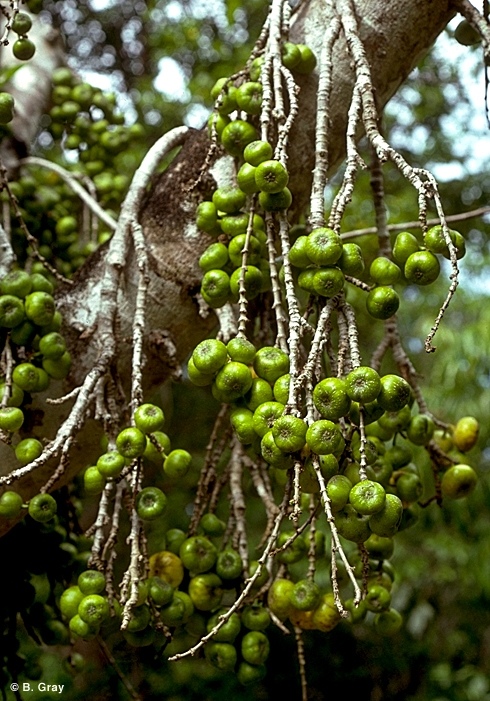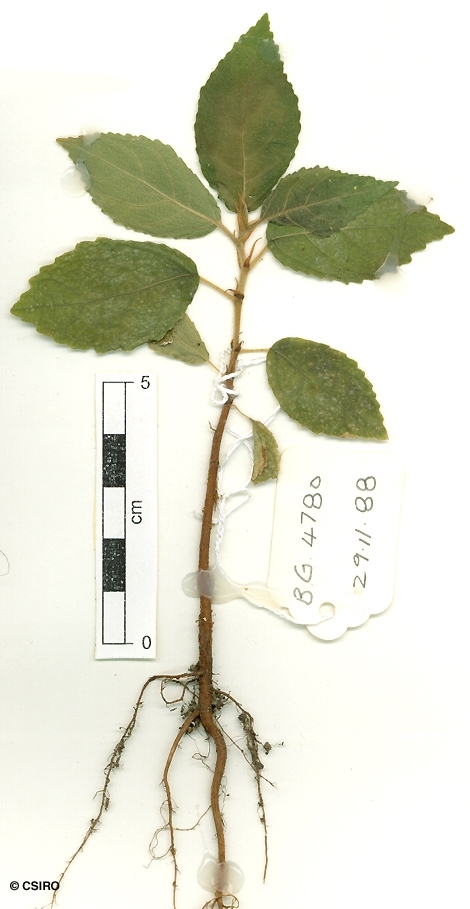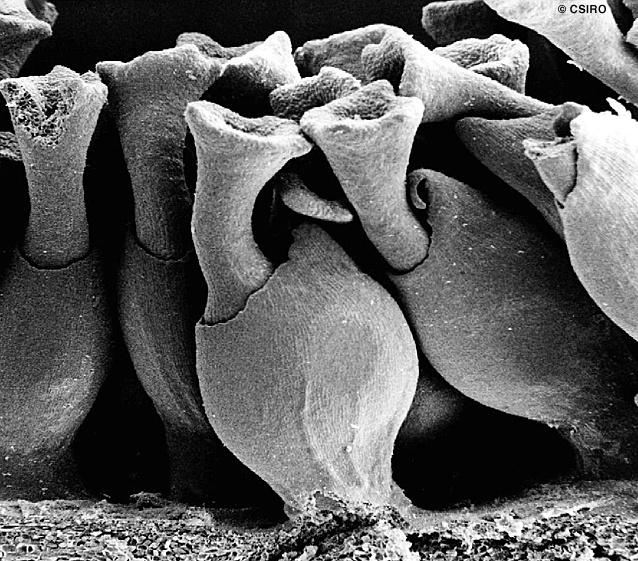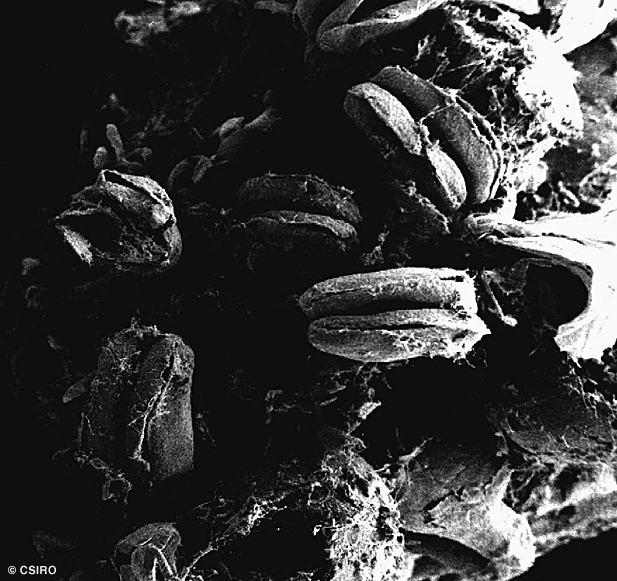Australian Tropical Rainforest Plants - Online edition
Ficus hispida L.f.







Linnaeus, C. von filius (1782) Supplementum Plantarum : 442. Type: Habitat in Java. Thunberg.
Hairy Fig; Fig, Hairy; Fig Tree; Fig; Boombil
Not a strangling fig. Bark exudate pale brown or turning pink and then pale brown on exposure.
Leaf blades about 15-35 x 6-20 cm, rough and sandpapery on both the upper and lower surfaces. Petiole and twigs produce a watery milky yellow exudate. Flat glands usually visible on the underside of the leaf blade in the forks of the lateral veins and the midrib. Oil dots visible with a lens. Stipules about 0.6-1 cm long, slightly hairy and tapering to a point at the apex.
Figs pedunculate, depressed globular to almost discoid, about 15-30 x 25-35 mm. Orifice closed by interlocking apical and internal bracts.
Cotyledons orbicular, about 2-3 mm diam. At the tenth leaf stage: leaf blade ovate to obovate, apex acuminate, base obtuse, margin crenate, teeth mainly along upper 2/3 of the leaf blade; both the upper and lower surfaces scabrous; oil dots small, numerous, visible with a lens from the underside of the leaf blade; stipules sheathing the terminal bud, narrowly triangular, persistent, midrib hairy. Seed germination time 14 to 208 days.
Occurs in WA, NT, CYP, NEQ and CEQ. Altitudinal range from sea level to 800 m. Grows in well developed lowland rain forest, gallery forest and upland rain forest. Also occurs in Asia and Malesia. This species provides a good supply of food for feral pigs on parts of Cape York Peninsula and as the figs are produced down to ground level the pigs can easily command the lower part of the crop.
Fruit eaten by Double-eyed Fig-parrots. Cooper & Cooper (1994).





